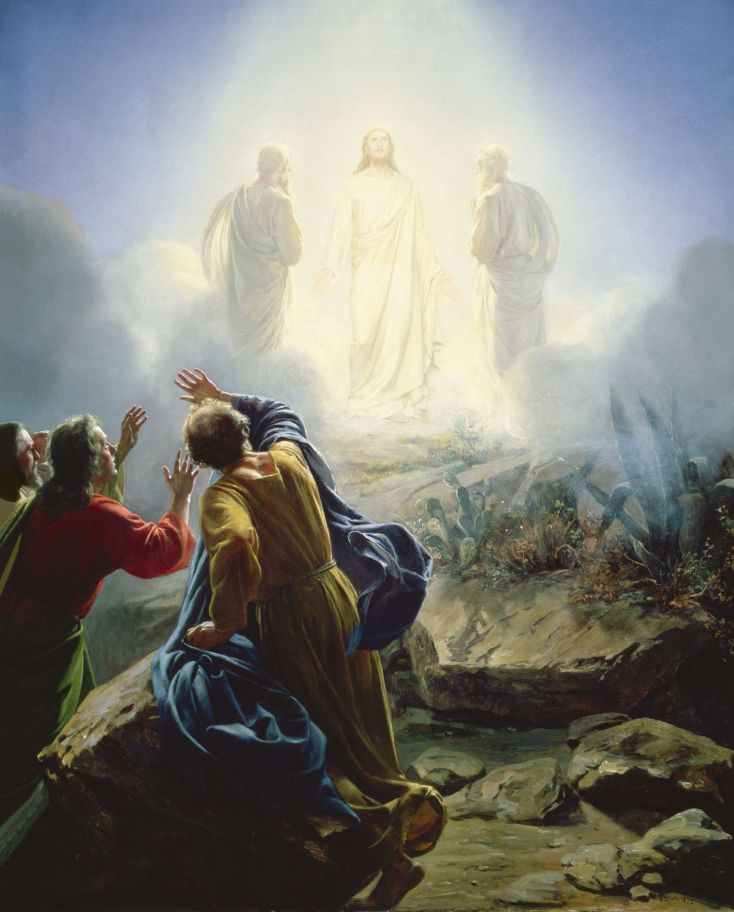Dear Brothers and Sisters,
 My close friends are amused knowing I’m no fan of mountain climbing (nor hiking, for that matter). When asked if I want to go for “a walk,” I typically ask a few questions before answering. Will it be a brief, casual walk, or a hike (and do they know the difference)? If it will be longer than a Sabbath day’s journey, it falls into the category of a hike. If it requires changing into another style of shoes, it’s a hike. If it requires walking on an incline for more than 25 feet, it’s a hike. I developed these qualifying criteria (along with a few others) after starting out on too many walks only to discover they were actually hikes. I’ve done my share of hiking, including some mountain climbing, and for me the thrill is gone. While my friends take their hikes, I’m happy to sit comfortably sheltered with a good book and a nice beverage, awaiting their return.
My close friends are amused knowing I’m no fan of mountain climbing (nor hiking, for that matter). When asked if I want to go for “a walk,” I typically ask a few questions before answering. Will it be a brief, casual walk, or a hike (and do they know the difference)? If it will be longer than a Sabbath day’s journey, it falls into the category of a hike. If it requires changing into another style of shoes, it’s a hike. If it requires walking on an incline for more than 25 feet, it’s a hike. I developed these qualifying criteria (along with a few others) after starting out on too many walks only to discover they were actually hikes. I’ve done my share of hiking, including some mountain climbing, and for me the thrill is gone. While my friends take their hikes, I’m happy to sit comfortably sheltered with a good book and a nice beverage, awaiting their return.

Public domain via Wikimedia Commons
That being said, there was a journey about 2,000 years ago to the top of a mountain that perhaps gave rise to the common phrase, “mountaintop experience.” What happened there is known as the transfiguration—an event recorded in the Gospels of Matthew, Mark and Luke. Had I been invited to take part, I assure you I would not have hesitated (despite my no-hike rule!). Why? Because the leader was none other than the one who calmed storms, pulled money from a fish’s mouth, fed masses, and healed all kinds of diseases. I gladly would have climbed the mountain of transfiguration with Jesus. I’m sure you feel the same.
On Transfiguration Sunday (February 7, this year), many Christians commemorate the transfiguration as an event of great significance in helping us understand our new covenant relationship with Jesus. I believe one of the best ways to understand that event is to be reminded of the prominent role that mountains play in several of the Old Testament stories. Mt. Ararat is where Noah’s ark came to rest. Mt. Moriah is where God provided a lamb for Abraham to sacrifice in place of Isaac. Mt. Sinai is where the Ten Commandments (the covenant between Israel and God) were given. Mt. Nebo is where Moses was allowed to see the Promised Land before he died. Mt. Gerizim and Mt. Ebal together formed an amphitheater where the people heard proclaimed the old covenant blessings and curses. Mt. Carmel is where the showdown between Elijah and the prophets of Baal took place. Mt. Zion is where the city of Jerusalem was built. When mountains are part of the story, something big is going on!
According to the New Testament, Jesus took Peter, James and John to a mountaintop to pray. Luke tells us that as Jesus was praying there, his appearance changed, and his clothes “became as bright as a flash of lightning” (Luke 9:29). And if that isn’t mountain-topping enough, Moses and Elijah suddenly appeared, also in glorious splendor, talking with Jesus about his death, resurrection and ascension—the text says, “They spoke about his departure, which he was about to bring to fulfillment at Jerusalem” (Luke 9:31). Luke then adds this:
Peter and his companions were very sleepy, but when they became fully awake, they saw his [Jesus’] glory and the two men [Moses and Elijah] standing with him. As the men were leaving Jesus, Peter said to him, “Master, it is good for us to be here. Let us put up three shelters—one for you, one for Moses and one for Elijah. (He did not know what he was saying).” (Luke 9:32-33)
Talk about the ultimate mountaintop experience! Having just awakened, Peter likely could not believe his eyes, and can you imagine what he was thinking at the time? “This is great… I don’t want this to end… let’s stay here awhile.” In the midst of his excitement he suggested the immediate building of “three shelters” (booths or tabernacles). But before Peter could say more, a cloud appeared and covered them and they became frightened. And if that wasn’t amazing enough, they heard a voice from heaven saying, “This is my Son, whom I have chosen; listen to him” (Luke 9:35); or “This is my Son, whom I love; with him I am well pleased. Listen to him!” (Matthew 17:5); or “This is my son, whom I love. Listen to him!” (Mark 9:7). According to Luke, when the voice finished speaking, the disciples “found that Jesus was alone” (Luke 9:36). The point being made for the benefit of these three disciples (and all others both then and now) is this: Jesus is supreme. He is superior to the Law (represented by Moses) and the Prophets (represented by Elijah). These twin pillars of the old covenant administration not only point to Jesus, but pale in significance before him.
As the old covenant faded from view, Jesus, the new covenant, remained with them. Only one luminary was now present for the disciples to honor and, with Jesus revealed for who he truly is, for them to worship. Given that revelation, there was no need to erect a shelter (a tabernacle, which is an old covenant custom). I believe this revelation also was showing these disciples something of the mysterious reality that theologians refer to as the hypostatic union—the miraculous joining of two natures (human and divine) in the one person of Jesus—a joining that (in the words of the Council of Chalcedon of AD 451) is “without confusion, without change, without division, without separation.”
Though it’s hard to know exactly what James, John and Peter understood at that moment, over time, through the illumination given by the Holy Spirit, they clearly got the point as we see in their New Testament writings. In his epistle, James alludes to the transfiguration in referring to “the Lord of glory” (James 2:1 ESV). In his Gospel, John refers to the transfiguration in writing that, “we have seen his glory” (John 1:14 ESV). And in one of his epistles, Peter refers to the transfiguration this way:
For we did not follow cleverly devised stories when we told you about the coming of our Lord Jesus Christ in power, but we were eyewitnesses of his majesty. He received honor and glory from God the Father when the voice came to him from the Majestic Glory, saying, “This is my Son, whom I love; with him I am well pleased.” We ourselves heard this voice that came from heaven when we were with him on the sacred mountain. (2 Peter 1:16-18)
What a journey (what a hike) these disciples had with Jesus! And our Lord continues to move his followers forward, “from one degree of glory to another” (2 Corinthians 3:18 ESV). We journey on as we participate with Jesus in his ongoing ministry, through the Spirit, to the world—a life that includes sharing in both his joys and sufferings. Let us keep our hiking boots on so we may continue following, knowing that he is leading us toward the mountaintop experience above all others—the moment of our glorification when we’ll see Jesus “face to face” (1 Corinthians 13:12). God speed that day!
Hiking with you,
Joseph Tkach



Thanks Dr. Joe. I recently uploaded a short video on Facebook re: this subject https://www.facebook.com/brotherjoeradosti/videos/vb.100001197154362/945721032144460/?type=2&theater
Grace & peace to you,